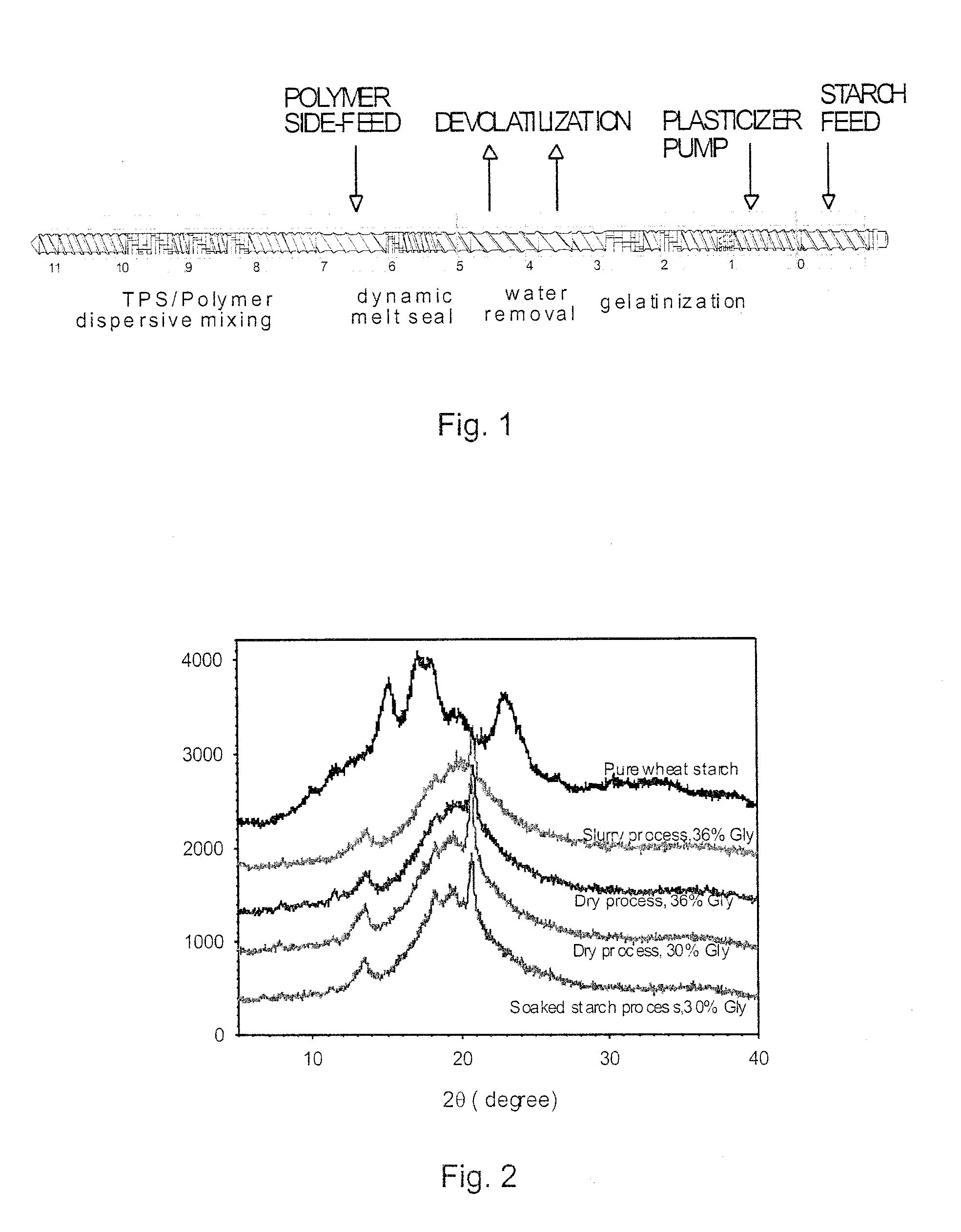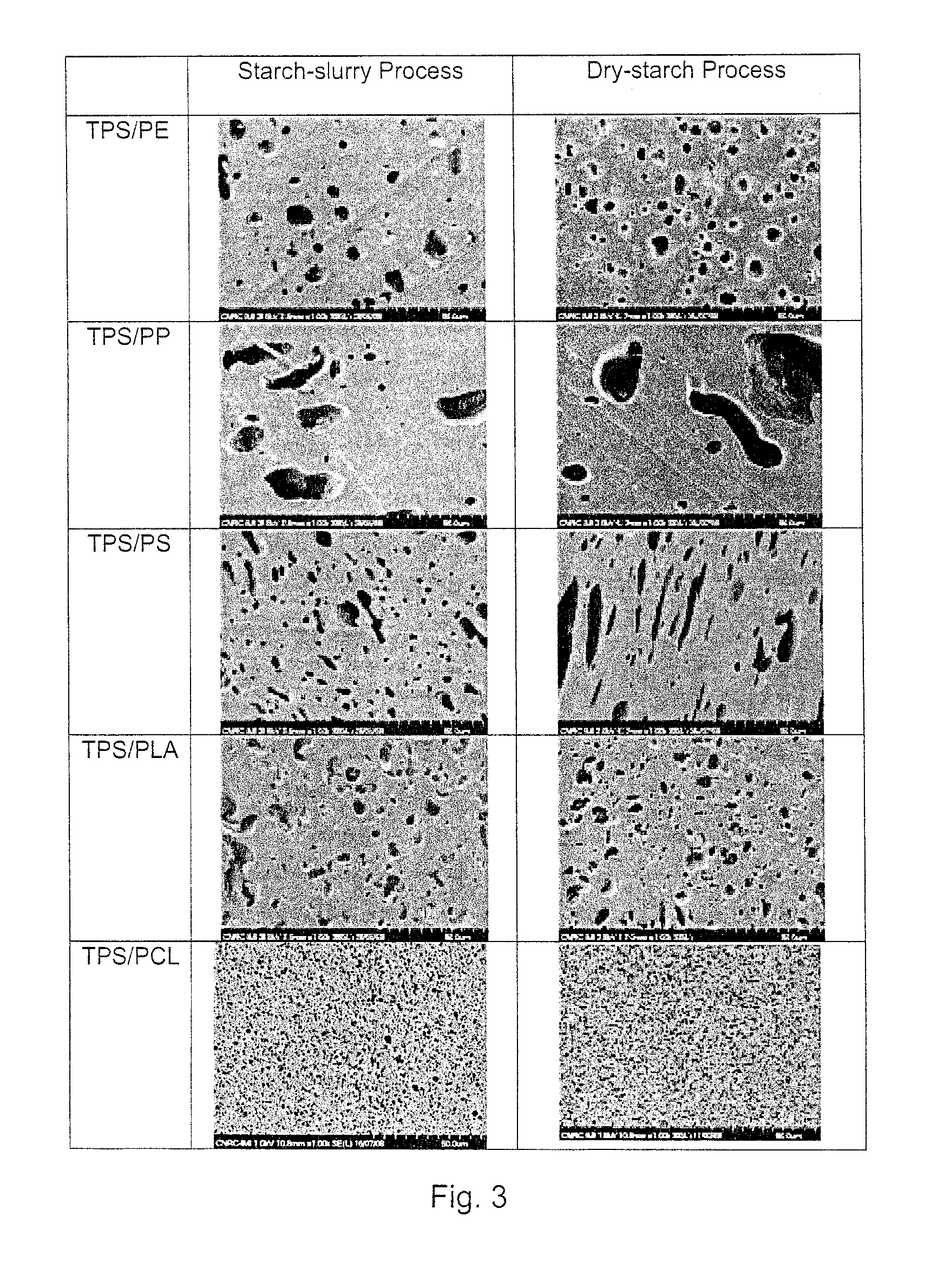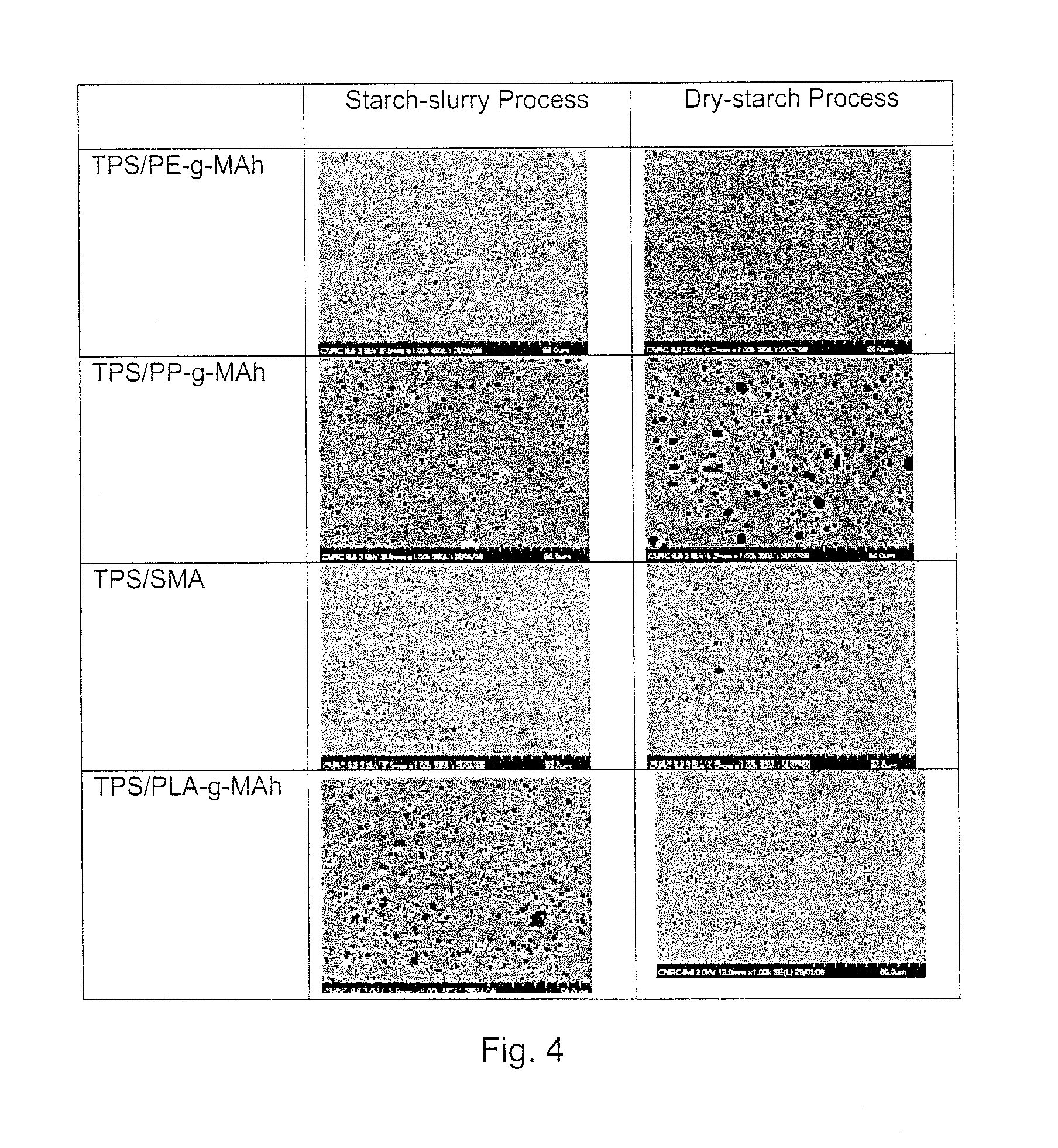Process of Producing Thermoplastic Starch/Polymer Blends
a technology of thermoplastic starch and polymer blend, which is applied in the field of polymer compositions, can solve the problems of high energy consumption, high cost, and high cost of thermoplastic starch, and achieve the effects of low energy consumption, low water consumption, and high production ra
- Summary
- Abstract
- Description
- Claims
- Application Information
AI Technical Summary
Benefits of technology
Problems solved by technology
Method used
Image
Examples
example 1
Comparison of Starch-Slurry and Dry-Starch Processes
Materials
[0031]Wheat starch was used as the sole starch source. The starch was an industrial purpose starch grade, Supergel™ 1201, supplied by ADM. The grade names and suppliers of PE, PP, PS, PCL and PLA are summarized in Table 1. The blend composition was set to 25% TPS for all TPS / polymer blends. For compatibilization of the TPS / polymer blends, functional polymers containing maleic anhydride were used to react with the starch macromolecules to create graft block copolymers that are known to act as emulsifiers in polymer blends. In the case of PE and PP, the functional version were maleic anhydride grafted PE and PP. For blends of TPS with PS, a random copolymer of styrene and maleic anhydride, SMA. For PLA, no such MAh grafted version was commercially available. Thus PLA-g-MAh was produced by extruding PLA in presence of 2% maleic anhydride and 0.25% organic peroxide. For PE, PP and PS, 10% of the polymer was substituted by the ...
example 2
Comparison of Glycerol- to Sorbitol-Based Plasticizer in Dry-Starch Process
[0044]This example investigates the morphology and properties of TPS / PLA blends prepared using the dry-starch process of the present invention, with TPS plasticized by sorbitol, glycerol and glycerol / sorbitol mixtures.
Materials
[0045]Poly(lactic acid), supplied by Nature Works, was a semi-crystalline grade (PLA 4032D) comprising around 2% D-LA. Wheat starch, Supergel™ 1203, was provided by ADM-Ogilvy. D-Sorbitol was obtained from Aldrich Chemical Company with a purity of 98%. The glycerol was a 99.5% pure USP grade supplied by Mat Laboratories. The reactive modification of PLA was performed using maleic anhydride (95% pure) and 0.25% of a peroxide initiator 2,5-dimethyl-2,5-di-(tertbutylperoxy) hexane (Luperox™ 101 or L101) obtained from Aldrich Chemical Company. The maleic anhydride grafted PLA was prepared according to the method described in an earlier work (Huneault 2007).
Blend Preparation
[0046]PLA / TPS ble...
PUM
| Property | Measurement | Unit |
|---|---|---|
| Ratio | aaaaa | aaaaa |
| Weight | aaaaa | aaaaa |
| Thermoplasticity | aaaaa | aaaaa |
Abstract
Description
Claims
Application Information
 Login to View More
Login to View More - R&D
- Intellectual Property
- Life Sciences
- Materials
- Tech Scout
- Unparalleled Data Quality
- Higher Quality Content
- 60% Fewer Hallucinations
Browse by: Latest US Patents, China's latest patents, Technical Efficacy Thesaurus, Application Domain, Technology Topic, Popular Technical Reports.
© 2025 PatSnap. All rights reserved.Legal|Privacy policy|Modern Slavery Act Transparency Statement|Sitemap|About US| Contact US: help@patsnap.com



